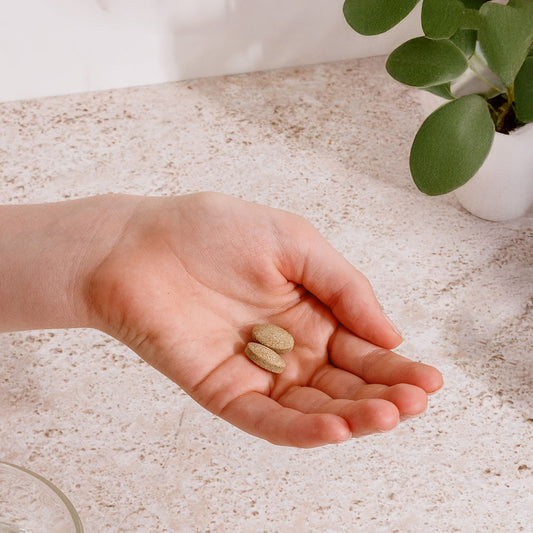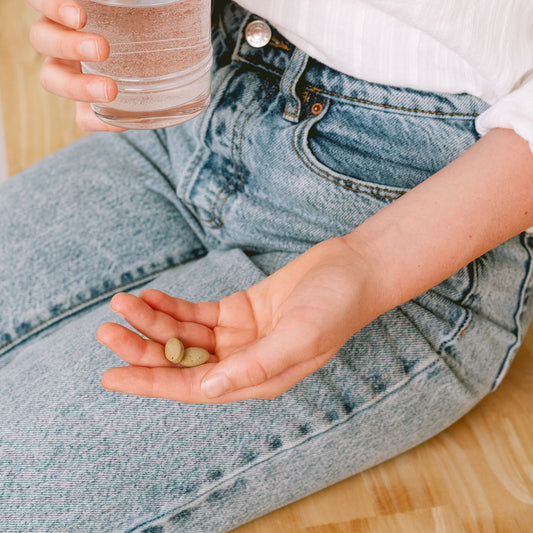We've become masters at multitasking in our modern world. As a culture that is often on the go, we've created a new food norm comprised of fast food, energy bars, and quick shakes to fuel us on the road and everywhere in between.
But continual snacking can take a toll on our health, and it's important to use these mini-meals with intention.
In this article:
- The Ayurvedic Perspective on Snacking
- 5 Tips for Building Better Eating Habits
- Snacks for Nourishing Vata Dosha
- Snacks for Nourishing Pitta Dosha
- Snacks for Nourishing Kapha Dosha
The Ayurvedic Perspective on Snacking
There's a popular saying in
Instead, when we're in a pattern of habitual snacking, it's often because we haven't eaten enough at a meal, skipped a meal altogether, or are eating for entertainment and emotional comfort.
In any of these events, eating when distracted, both physically or emotionally, can put the body in a stressed state and leave us with indigestion, bloating, and fluctuating energy levels.
Of course, there are times when we may be more active, traveling, or simply needing more nourishment, and a snack is reasonable.
In these times, knowing which snacks will bring balance rather than depletion can be helpful knowledge to have. Equally, building awareness and healthier routines around daily eating habits can take us out of the cycle of snacking as a lifestyle.
5 Tips for Building Better Eating Habits
As a rule of thumb, to improve your digestive capacity, Ayurveda recommends prioritizing 2–3 meals a day at the optimal hours for each and giving rest to the digestion between meals.
If you've been in a habit of eating when on-the-go or skipping meals or grazing throughout the day, it may take some time and conscious effort to integrate new habits. But the results will be well worth it, with improved digestion, more consistent energy, and even weight loss for some.
Here are a few ways to support the transition into healthier eating habits:
- Establish a routine around eating. Plan ahead and schedule time in your calendar to eat a satiating breakfast in the morning, a heartier lunch around noon, and lighter dinner around 6 p.m. This can take conscious planning and practice getting used to a routine, especially if you've been in the habit of grazing. Use tools like the calendar on your phone or set a reminder if you are easily distracted in the daytime.
- Make the meal the main event. This means leaving your phone in the other room, turning off the TV or other distractions, and sitting down to enjoy your meal in full presence. If you're sharing a social meal, keep your conversation agreeable and light, or invite your dining partner to join you in silence for a few bites. Eating with connection to the senses and awareness of how much you're chewing and tasting your food can leave you feeling more satisfied at the end of the meal.
- Stay hydrated. Sometimes the desire to snack comes from a need for hydration. Try drinking warm or room-temperature water and herbal teas between meals to curb needless hunger.
- Observe your cravings. When the desire to snack arises, ask yourself whether it is true hunger or a desire for distraction. Observe if the desire is connected to an emotion or need beyond physical hunger. If so, try going for a walk or journaling to shift the energy from a controlling craving to an opportunity to cultivate greater self-awareness.
-
Snack mindfully.If it's true hunger, then select a snack with your body's needs in mind, considering your

Snacks for Nourishing Vata Dosha
For those with a vata constitution or experiencing a vata imbalance, opting for snacks that provide warm and grounding nourishment can help to reduce the dry, light, and rough qualities of vata dosha.
The mobile and erratic nature of vata requires routine above all else, so sticking to eating three solid meals, and a lighter afternoon snack as needed, can be beneficial for both digestion and energy levels.
Generally, with a weaker digestive fire (
The following recipe and simple snack ideas are suitable options for vata when true hunger arises:
Warm Rice Drink
Makes 1–2 servings
Ingredients:
- 1 cup cooked basmati rice
- 2 pitted dates
- 1 tablespoon ghee
- 1/4 teaspoon cardamom powder
- 1/4 teaspoon cinnamon powder
- 1/4 teaspoon ginger powder
- 2 cups warm water
- 1 tablespoon maple syrup or raw honey for a little more sweetness (optional)
Directions:
Combine all ingredients in a blender and puree until creamy. Pour into a glass and enjoy warm or at room temperature.
Simple Snack Ideas
- Soaked apricots
- Cooked apple with
- Stuffed dates (ghee, tahini, sunflower butter, almond butter)
- Avocado slices or guacamole
Snacks for Nourishing Pitta Dosha
For those with a pitta constitution or experiencing a pitta imbalance, opting for snacks that provide cooling but substantial nourishment can be beneficial when afternoon hunger arises.
Pitta can drive a voracious appetite, so it's crucial to ensure you're eating enough quality food at breakfast, lunch, and dinner to satisfy you, especially if you are very active.
Long periods of fasting are not beneficial for pitta. An overactive, under-fueled body can lead to burnout quickly. With that said, choosing foods that calm pitta by decreasing internal heat, nourishing the digestive fire, and grounding the body can help to bypass the sharp “hangry” experience.
The following recipe and simple snack ideas are suitable options for pitta when true hunger arises:
Coconut Energy Bites
Makes 10–12 balls
Ingredients:
- 1/2 cup walnuts
- 1/2 cup whole almonds
- 1/2 cup almond butter
- 4 pitted dates
- 1/4 cup maple syrup
- 1/2 teaspoon vanilla extract
- 1/4 teaspoon salt
- 2 cups shredded unsweetened coconut
- 1/4 cup raw carob powder (optional)
Directions:
Place walnuts in a food processor and process until coarsely ground. Add the dates and pulse until well combined with the nuts. Add the carob powder, maple syrup, almond butter, vanilla, and salt. Process until the mixture is thick and smooth. Add the almonds and pulse a few times until well combined; you want them to remain in crunchy chunks.
Form the mixture into golf ball-size balls with your hands. Roll the balls in coconut. Place in a sealed container in the fridge until the balls firm up.
Simple Snack Ideas
- Fresh fruit
- Cucumber, zucchini, or carrot sticks
- A handful of soaked and peeled almonds
- Rosewater or fennel lassi

Snacks for Nourishing Kapha Dosha
For those with a kapha constitution or experiencing a kapha imbalance, it's best to skip the snacking altogether and emphasize 4–5 hours of fasting between meals to improve overall digestion, especially if you tend towards sluggish digestion.
In general, a kapha-pacifying diet is one that brings in the light, warming, drying qualities to balance the dense, cool, dampness of the earth and water elements that comprise kapha dosha.
Foods to avoid: cold drinks, frozen foods, ice cream, sugary snacks, overly sour or denser sweet fruits, like bananas, oily or fried foods, or heavily salted foods.
The following recipe and simple snack ideas are suitable options for kapha when true hunger arises:
Kale Chips
Makes 3–4 servings
Ingredients:
- 2 bunches curly kale
- 4–5 tablespoons olive oil
- 1 lemon, juiced
- 1/2 teaspoon salt
- 2 tablespoons nutritional yeast (optional)
- 1/8 teaspoon cayenne pepper (optional)
Directions:
Wash thoroughly, then tear the kale leaves into pieces. In a bowl, toss the kale with the olive oil, lemon juice, and salt. If using a dehydrator, spread the kale across the dehydrator sheets and dehydrate for 6–7 hours at 105°.
If you don't have a dehydrator, set your oven to the lowest temperature. Spread kale across a baking sheet. Bake for 20–30 minutes, checking frequently to make sure the oven isn't getting too hot and burning the kale.
Simple Snack Ideas
- Fresh ginger tea with raw honey
- Savory turmeric-spiced popcorn
- Rice cakes with raw kraut or kimchi
- Baked apple with clove and cinnamon
Recipes & photography by Claire Ragozzino / Vidya Living.











